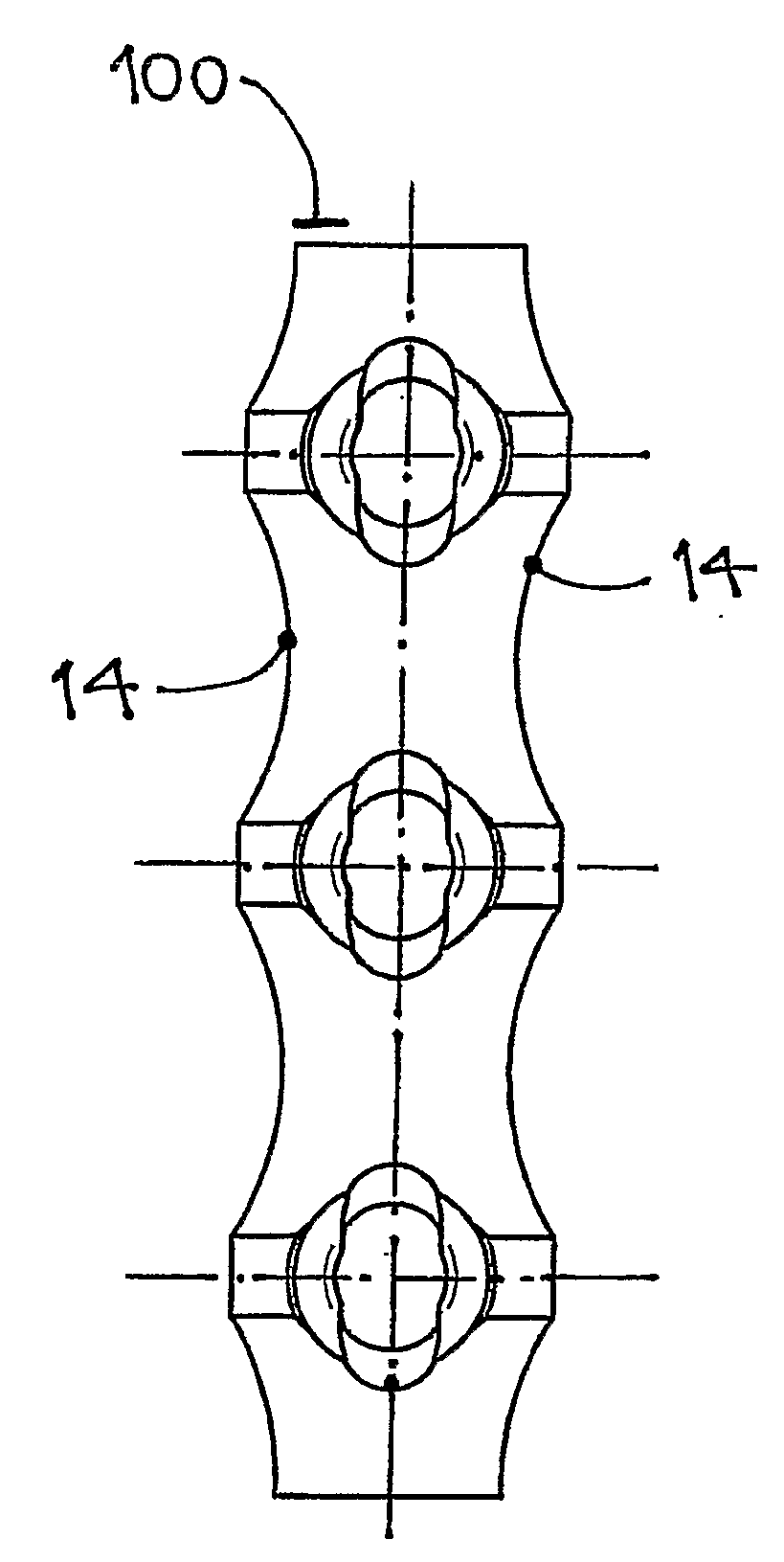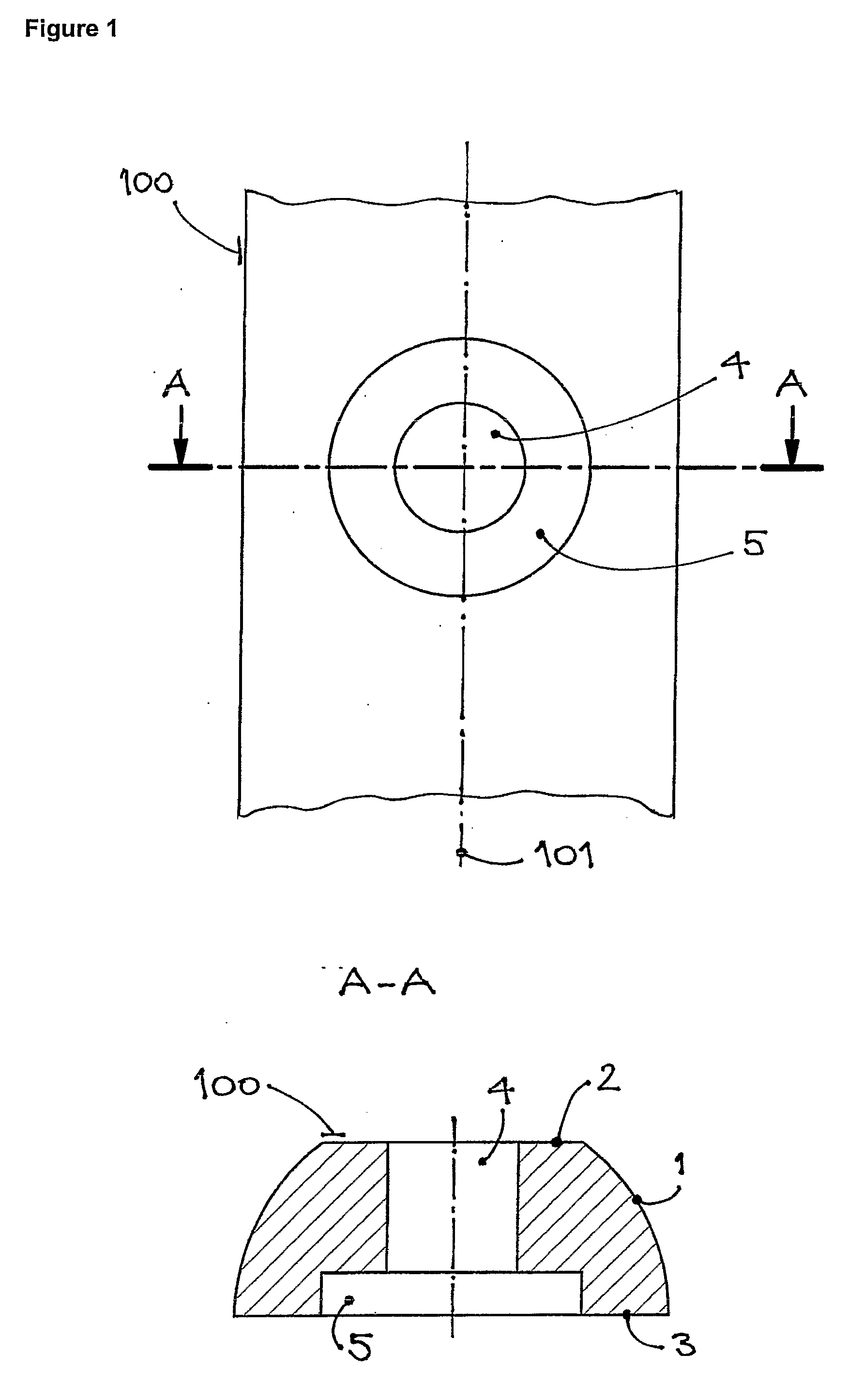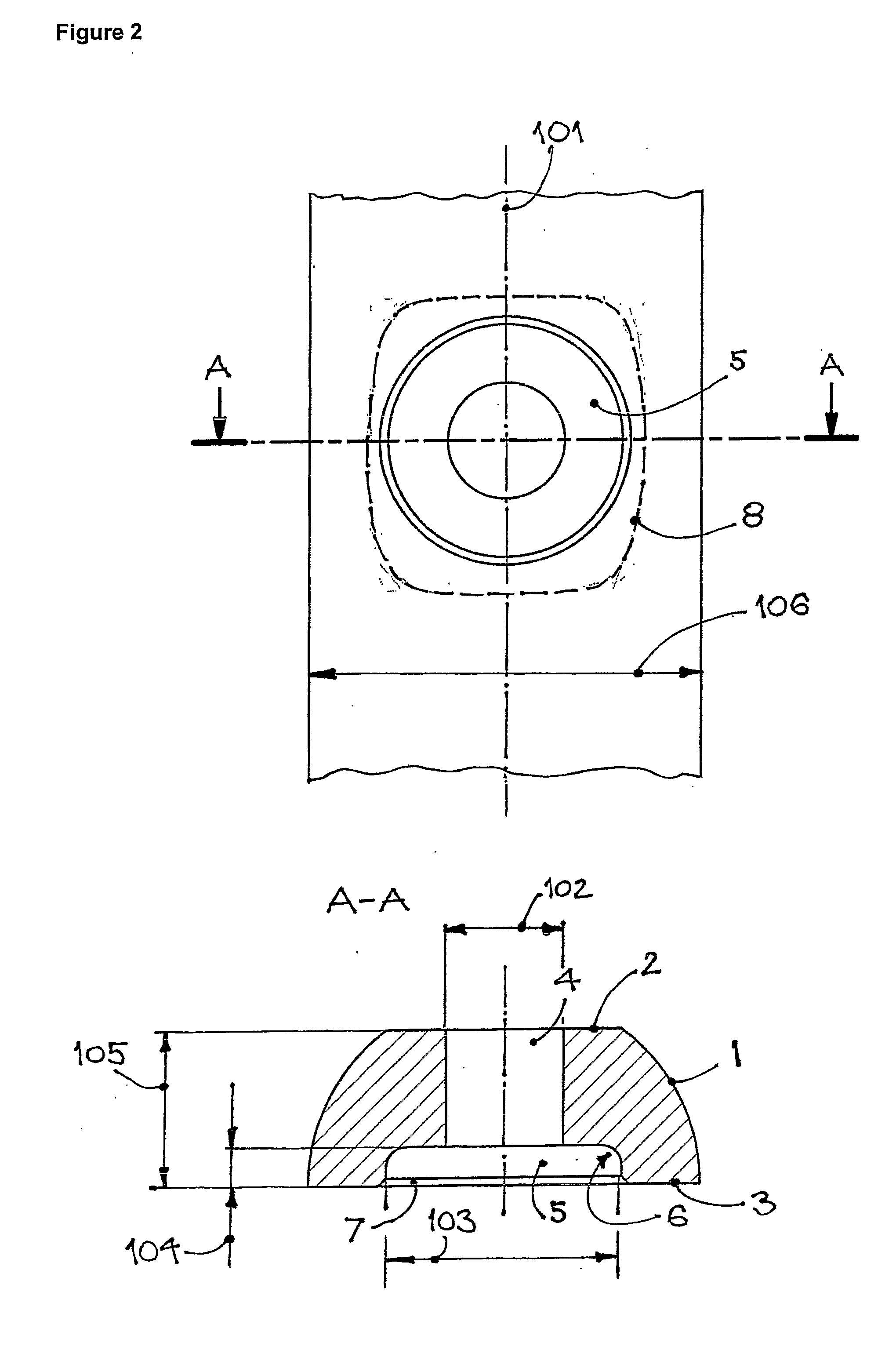Plate and Screws for Treatment of Bone Fractures
- Summary
- Abstract
- Description
- Claims
- Application Information
AI Technical Summary
Benefits of technology
Problems solved by technology
Method used
Image
Examples
Embodiment Construction
[0049]A section of the plate, 100, is shown in a normal projection from its lower, bone-facing surface, 3, on FIG. 1, together with a transverse cross section, A-A, cut through the screw hole, 4. The upper surface, 2, of the plate, 100, is parallel to the lower surface, 3, while the sides of the plate, 1, may be beneficially curved and inclined, so as to make the upper surface of the plate narrower in order to facilitate closure of the soft tissue over the plate. The screw hole, 4, is surrounded by a recess, 5, at the lower surface, 3, of the plate. The purpose of the recess, 5, is to eliminate the potential contact of the plate and the bone surrounding the screw. The lower surface, 3, of the plate, 100, is essentially planar.
[0050]While the shape of the recess, 5, is shown as being circular in shape when viewed from the lower side of the plate, other shapes, such as that shown by dotted line, 8, on FIG. 2, can be used to achieve the same effect. A shape somewhat elongated in the di...
PUM
 Login to View More
Login to View More Abstract
Description
Claims
Application Information
 Login to View More
Login to View More - R&D
- Intellectual Property
- Life Sciences
- Materials
- Tech Scout
- Unparalleled Data Quality
- Higher Quality Content
- 60% Fewer Hallucinations
Browse by: Latest US Patents, China's latest patents, Technical Efficacy Thesaurus, Application Domain, Technology Topic, Popular Technical Reports.
© 2025 PatSnap. All rights reserved.Legal|Privacy policy|Modern Slavery Act Transparency Statement|Sitemap|About US| Contact US: help@patsnap.com



